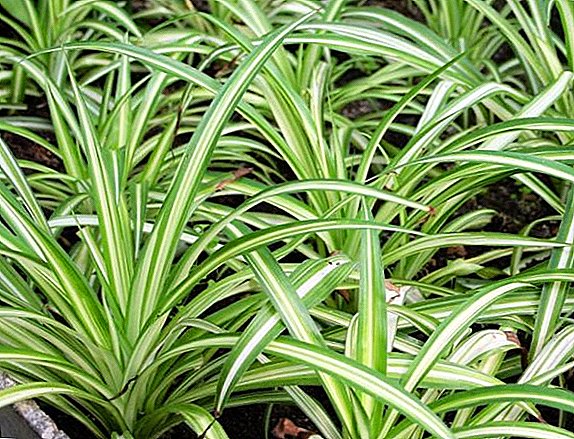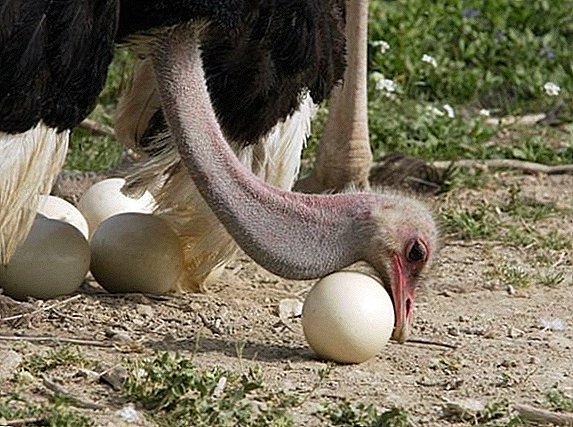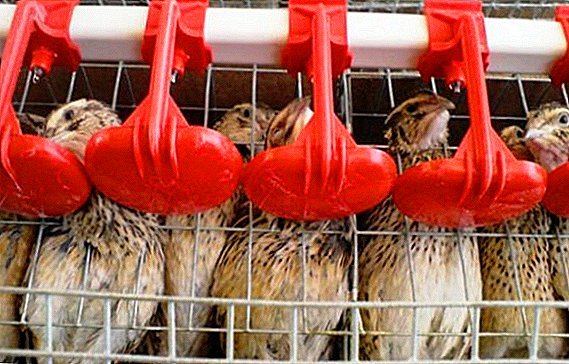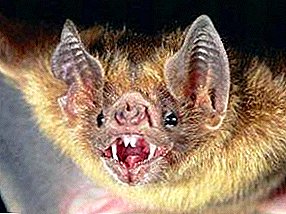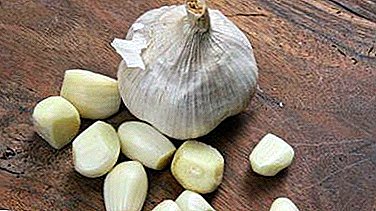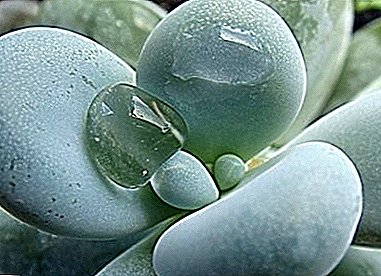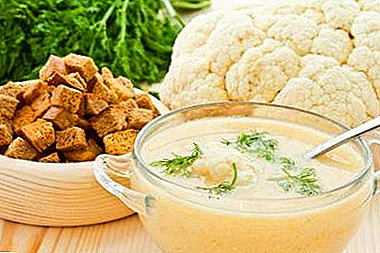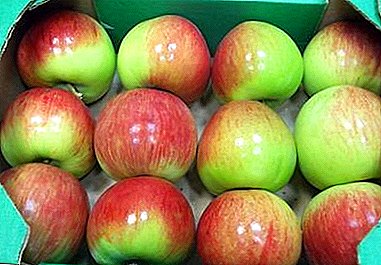 Mandarin came to Europe only 170 years ago thanks to the Italian Michel Tecor. The fruit owes its name to the Chinese. They could eat only the rich dignitaries of China - tangerines.
Mandarin came to Europe only 170 years ago thanks to the Italian Michel Tecor. The fruit owes its name to the Chinese. They could eat only the rich dignitaries of China - tangerines.
Mandarins of dwarf species and low-growing varieties are suitable for indoor plants. Consider the types, varieties of mandarins, their varieties and determine the main characteristics and features.
Vivistvogo grade
 Low tree with a rounded crown without thorns. It can be grown both in open ground and as an indoor plant. In a pot it grows up to 2 m tall and has dark green dense oblong leaves. The plant blooms in spring with white fragrant flowers, slightly smaller than that of lemon. To obtain the fruits of pollination is not necessary. Fruits grow weighing up to 70 g, almost without seeds. Harvesting is carried out in November. The tree bears fruit from the age of three.
Low tree with a rounded crown without thorns. It can be grown both in open ground and as an indoor plant. In a pot it grows up to 2 m tall and has dark green dense oblong leaves. The plant blooms in spring with white fragrant flowers, slightly smaller than that of lemon. To obtain the fruits of pollination is not necessary. Fruits grow weighing up to 70 g, almost without seeds. Harvesting is carried out in November. The tree bears fruit from the age of three.
Important! Growing tangerine at home, you need to constantly monitor the humidity of the air. To do this, next to the plant put the dishes with water, and the crown is sprayed daily. Adequate light is important for normal growth. Therefore, in the fall and winter, trees need artificial light. In summer, the plant feels better outdoors.
Wase Grade Group
This group includes the varieties Miho-Vasa, Miagawa-Vasa, Okottsu-Vasa, Novano-Vasa, Kovano-Vasa.
Grade Kovano-Vasya
The variety is considered to be the ancestor of the Japanese dwarf mandarin varieties. It was introduced from Japan in 1930. This is an evergreen, undersized tree, which grows no more than 40-50 cm under room conditions. It has a compact crown with abundant foliage without thorns, which does not need to be formed. The bark is rough, brown in color. The shoots are light green first and then turn brown. The leaves are green, broadly. Flowers are white, have five petals and can be placed singly or in small inflorescences. In size refer to large up to 4.3 cm in diameter. The pestle looks out of the stamens accrete at the base. Sterile pollen.  Fruits of bright orange color of a rounded flattened form ripen in the beginning of October and have a sweet-sour taste. The flesh is divided into 9-13 slices, contains 30.3 mg of vitamin C per 100 g of product and does not contain seeds. The peel is smooth, fragile, 0.3 cm thick, well separated from the pulp. The tree bears fruit in the first or second year of life and is distinguished by high yield. Frost varieties high. The plant is propagated by grafting and air layering.
Fruits of bright orange color of a rounded flattened form ripen in the beginning of October and have a sweet-sour taste. The flesh is divided into 9-13 slices, contains 30.3 mg of vitamin C per 100 g of product and does not contain seeds. The peel is smooth, fragile, 0.3 cm thick, well separated from the pulp. The tree bears fruit in the first or second year of life and is distinguished by high yield. Frost varieties high. The plant is propagated by grafting and air layering.
Sort Miagawa Vasya
The variety was bred in 1923 by Dr. Tuzaburu Tanaka. Tree height is the tallest of all varieties of Wase, characterized by high performance. It is the most common and well-known of the Wase varieties. Fruits of mandarin are relatively large, seedless, have a thin smooth skin. The flesh is juicy, of excellent quality. Variety on maturity refers to the earliest. Fruit ripening occurs at the end of September. The fruits are well preserved. 
Clementine Group
The plant is a hybrid of mandarin and orange-orange from the subspecies of oranges. It was created in 1902 by the French priest breeder Clement Rodier (1839-1904). Mostly Clementine trees are tall, but sometimes they are used for growing at home and in closed greenhouses. Consider the main varieties.
Variety Marisol (C. Clementina)
An early cultivar that results from a clementine orohal mutation and is ideal for indoor cultivation. This is a fairly tall tree with short branches and dense foliage. Fruit ripening occurs from the end of September. Fruits are rather large with a mass of 70-130 g and a diameter of 5.5-7 cm. The skin is thin orange in color, contains many essential oils. The flesh is soft, very juicy, slightly sour, contains 2 seeds. When harvesting the fruit must be cut so that the cup does not remain on the stem. 
Grade Noules (C. Clementina)
The variety is derived from mutations in the variety Fina. It is very popular in Spain. The tree has medium size and spherical crown. Branches do not contain thorns. Leaf blades are narrow, white flowers, small, single or in small inflorescences. Fruits of large size weighing 80-130 g. The peel is bright orange in color with a pink tinge, soft, bumpy. The flesh is very juicy, sweet, contains few seeds. To increase the yield it is recommended to remove small ovaries, leaving no more than three in the group. Fruit ripening occurs from late November to December. The variety does not tolerate lower temperatures, so it is often diluted in the premises. 
Variety Rubino (C. Clementina)
Middle-grown tree was bred in Italy and belongs to the late varieties. It has a dense spherical crown without thorns and a very high yield. Fruits of small size weighing up to 80 g with a thin orange-red peel. The flesh is of good quality, juicy, orange. Fruit ripening occurs from January to February. Mandarins can hang on a tree until the beginning of June without losing its taste. 
Sort Nobils
The variety belongs to the “noble” group and is often called royal. Comes from a group of Indo-Chinese or Cambodian mandarins. Some characteristics of this plant allow us to say that it belongs to the natural hybrids of mandarin and orange. Fruits are the largest size of all known varieties of mandarins. The rind is very thick for tangerine, bumpy, tight to the pulp, but cleaned well and has a yellow-orange color. 
Sort Pioneer number 80
Selected by V. M. Zorin in the 50s of the XX century. Trees have a pyramidal shape with an average foliar density. The bark is rough, brown in color, on the branches has a brown color. The shoots are light green, ribbed with a small presence of spines. The lamina is 12–14 cm long and 5–6 cm wide in dark green with pointed edges. Flowers have 5 petals, arranged singly or in small inflorescences, 4 cm in diameter. In the middle of the flower there are 19-22 stamens, fused at the base, above which a light yellow pistil stands. Fruits are rounded flat, weighing 60-80 g, 4.5-5.8 cm in size.  Mandarins generally have a rounded flat base, in some cases with a small nipple-shaped outgrowth. The peel is 0.2-0.4 cm thick, slightly rough, well behind the flesh. The flesh of the fruit is orange, juicy, has a sweet-sour taste. It is divided into 9-12 slices with thick films and does not contain seeds. Vitamin C content is 29 mg per 100 g of product. Harvesting is carried out in the second half of November. Frost varieties high.
Mandarins generally have a rounded flat base, in some cases with a small nipple-shaped outgrowth. The peel is 0.2-0.4 cm thick, slightly rough, well behind the flesh. The flesh of the fruit is orange, juicy, has a sweet-sour taste. It is divided into 9-12 slices with thick films and does not contain seeds. Vitamin C content is 29 mg per 100 g of product. Harvesting is carried out in the second half of November. Frost varieties high.
Sort Sochi number 23
Selected after crossing seedlings of mandarin Unshiu FM Zorin in the 50s of the twentieth century at the Sochi experimental station. The tree has a broad crown shape with abundant foliage and a small number of spines. The rough bark has a brown color. Shoots on top ribbed have a light green color. The leaves are oblong-oval in shape, large in size 12 x 5 cm, corrugated and form a boat along the main vein. Flowers consist of 5 petals of white color with a cream shade and fused 19-21 stamens with a rounded pistil, which rises above them.  Flowers can be placed singly or several in small inflorescences, their size - up to 3 cm in diameter. Sterile pollen. The fruits have a rounded-flattened or slightly pear-shaped. Their weight is about 70 g, the average size in diameter is about 6 cm and 5 cm high. The peel is orange, slightly rough, 0.2-0.5 cm thick, well separated from the pulp. The flesh is sweet and sour in taste, juicy, divided into 9-12 cloves and does not contain seeds. Vitamin C content is 29 mg per 100 g of product. Frost varieties high.
Flowers can be placed singly or several in small inflorescences, their size - up to 3 cm in diameter. Sterile pollen. The fruits have a rounded-flattened or slightly pear-shaped. Their weight is about 70 g, the average size in diameter is about 6 cm and 5 cm high. The peel is orange, slightly rough, 0.2-0.5 cm thick, well separated from the pulp. The flesh is sweet and sour in taste, juicy, divided into 9-12 cloves and does not contain seeds. Vitamin C content is 29 mg per 100 g of product. Frost varieties high.
Early Abkhazian variety
Abkhazian early mandarin belongs to the most common and early varieties. Under room conditions, the tree grows small in size with large green leaves. The plant blooms in May, and bears fruit in October. Fruits of medium size, round shape, have a thick, nodular, dull yellow-orange peel. The flesh is juicy, sweet with a slight acidity, contains a large number of seeds. Fruits are easy to clean. The plant is afraid of an overabundance of moisture, so it is recommended to water it as the humidity of the earthen coma decreases. 
Variety Agudzera
The variety comes from the Black Sea coast of the Caucasus. Treats early grades. The crown of the tree has a vertical growth with a small number of spines or maybe without them. Tangerines are yellow-orange, relatively large, with a thick skin. The flesh is juicy, has a sweet-sour taste. 
Important! Enemies for indoor mandarin are spider mites, scales, mealybugs, fungi and viruses.
Variety nova
The semi-early hybrid variety, bred in 1942 in Florida. Mass was grown in 1964 in Israel, Spain. Variety Nova is ideal for growing in pots.  The tree has a spreading crown of medium size, on which there are no thorns. The leaves are elongated, similar to the Clementine variety. Refers to early varieties. For better fruiting, it is necessary to carry out formative pruning to remove weak fruit. Otherwise, the harvest of the next year will not be high. Flowers have a very fragrant smell. Fruits are medium in size with a thin peel that fits tightly to the pulp and is poorly cleaned. The flesh is juicy, dark orange, sweet, divided into 10-11 segments and contains up to 30 seeds. Fruits fully ripen in December. The crop must be removed immediately after ripening, otherwise its quality will deteriorate.
The tree has a spreading crown of medium size, on which there are no thorns. The leaves are elongated, similar to the Clementine variety. Refers to early varieties. For better fruiting, it is necessary to carry out formative pruning to remove weak fruit. Otherwise, the harvest of the next year will not be high. Flowers have a very fragrant smell. Fruits are medium in size with a thin peel that fits tightly to the pulp and is poorly cleaned. The flesh is juicy, dark orange, sweet, divided into 10-11 segments and contains up to 30 seeds. Fruits fully ripen in December. The crop must be removed immediately after ripening, otherwise its quality will deteriorate.
Unshiu variety
The Unshiu variety belongs to the Satsuma group of Japanese varieties, although it hails from China. Cultivation occurred in Japan, after which spread throughout the world. It has high frost resistance compared with other varieties of mandarins. Another advantage of the plant is the rapid maturation of the fruit with low solar activity. Due to the small size of the crown variety is grown both in open ground and as a houseplant.  At home, the evergreen tree has a crown up to 1.5 m high with dense dark green leaves. The shape of the leaf blade is elongated, with strongly protruding veins. The period of renewal of foliage is from 2 to 4 years. Flowering occurs in May. White flowers, numerous, are collected in inflorescences of 4-6 pieces. Sterile pollen. Fruits have a rounded flat shape, weighing up to 70 g. The peel of orange color is well cleared of flesh.
At home, the evergreen tree has a crown up to 1.5 m high with dense dark green leaves. The shape of the leaf blade is elongated, with strongly protruding veins. The period of renewal of foliage is from 2 to 4 years. Flowering occurs in May. White flowers, numerous, are collected in inflorescences of 4-6 pieces. Sterile pollen. Fruits have a rounded flat shape, weighing up to 70 g. The peel of orange color is well cleared of flesh.
The pulp is juicy, does not contain seeds. Trees bear fruit from the age of three. Harvesting is carried out in late October. Propagated plant grafts on other citrus plants or cuttings. Rooting cuttings is a very time-consuming process, so gardeners prefer vaccinations.
Did you know? Unshiu needs to be abundantly watered only in summer, in winter the plant is practically not watered. Up to 8 years of age, the plant is transplanted annually, and later every two years. Like all subtropical cultures Unshiu loves sunny warm rooms, but in the winter needs a cool content (4-10 degrees).
Sort Shiva Mikan
Early variety with an average yield. The tree is compact, fast-growing, with abundant foliage of dark green color. Fruits are small, weighing up to 30 g, have a sweet-sour taste. The variety is used as an ornamental plant and for breeding, as it is highly frost resistant.
Did you know? Tangerine is a plant from the Citrus family and is a subspecies of mandarin. The fruits of tangerine are almost the same as those of mandarin. Their distinctive feature of tangerines is the absence of seeds in the fruit, a brighter red-orange and thin peel and a sweeter taste.
Variety Murcott (Honey)
The variety obtained by hybridization of mandarin and tangerine. Was bred in 1913 by Dr. V. T. Swingle in Florida. Mandarin Murkot in translation means honey and is called tangore. The tree is medium in size with dangling branches and small pointed leaves. Fruits grow in groups and have an average size. The peel is yellow-orange, thin, smooth, tight to the flesh. The flesh is divided into 11-12 slices, tender, juicy, fragrant, very sweet, contains many seeds. Variety refers to medium late. Fruit ripening occurs from December to February. Productivity is high, but prone to alternate fruiting.  Mandarin in a pot has a high decorative value in the interior of each apartment, in addition, how pleasant it is to eat sweet fruits grown with your own hands.
Mandarin in a pot has a high decorative value in the interior of each apartment, in addition, how pleasant it is to eat sweet fruits grown with your own hands.


